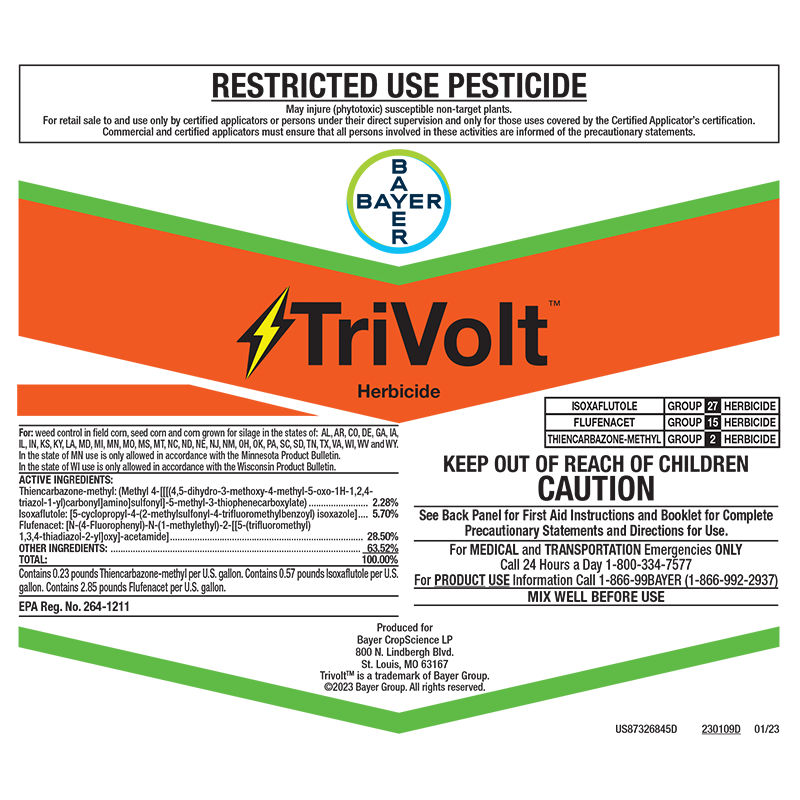TriVolt Herbicide
HerbicideBuilt with a proprietary formula, Trivolt™ Corn Herbicide provides burndown and residual activity in a variety of weather conditions.
Approved In
AL, AR, CO, DE, GA, IA, IL, IN, KS, KY, LA, MD, MI, MN, MO, MS, MT, NC, ND, NE, NJ, NM, OH, OK, PA, SC, SD, TN, TX, VA, WI, WV, WY
Labels / Safety Data Sheets (MSDS)
TRIVOLT Label
TRIVOLT MSDS - Spanish
TRIVOLT MSDS - Spanish
TRIVOLT MSDS - English
TRIVOLT MSDS - English
For Weed Control in Field Corn, Seed Corn & Corn Silage
Effective Against
Our portfolio has products to fight a variety of weeds, pests and diseases.
Barnyard Grass
Common Lambsquarters
Common Ragweed
Common Waterhemp
Crabgrass Species
Fall Panicum
Registered Crops
Our products are available for use on a variety of different crops.
checkcorn
Additional Downloads
TriVolt Product Bulletin 23
